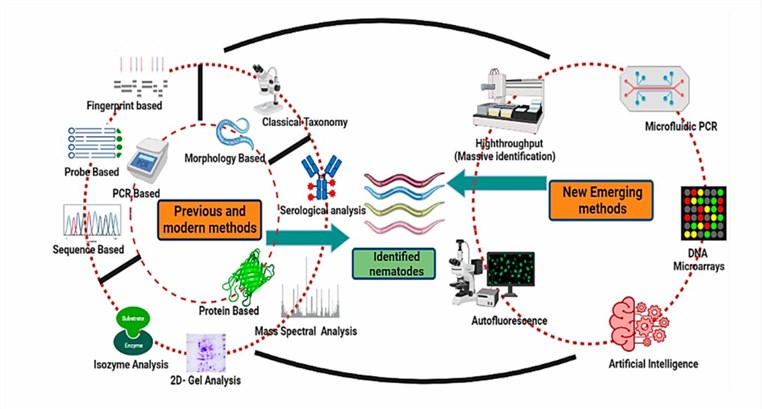Detection of Plant Nematodes
Nematodes contain more than one million species and are probably the most diverse and abundant metazoans in soil and aquatic sediments. Traditionally, recognition is based on features such as body length, sexual organ morphology, mouth and tail parts, and other physical features. But classical morphology-based identification has proved inadequate for studies of nematode identification and diversity, and different molecular methods have been used to supplement morphology-based methods and/or circumvent defects with varying degrees of success.
Lifeasible, as a leading global company, is committed to helping our customers achieve effective and successful research. We provide the detection of plant nematodes based on morphology, molecular biology, and protein analysis. In addition, we deliver reliable results and reports on time to our customers all over the world.
- The classical identification of nematodes is based on morphological and anatomical differences using microscopic images, which does not need expensive instruments and equipment.
- Although morphological detection methods are effective for nematodes with distinct differences, nematodes with subtle morphological and morphometric differences such as body length, presence and probe shape, tail shape, etc., are difficult to distinguish morphologically.
- Lifeasible provides detection of plant nematodes by light microscopy and scanning electron microscopy and statistics on important morphological features of nematodes, including head shape, number of rings, body length, needle tip length, needle tip segment shape, lateral field structure, spermatheca shape, female caudal shape, needle tip shape, length, and others.
 Fig.1 Different nematode identification techniques. (Bhat KA, et al., 2022)
Fig.1 Different nematode identification techniques. (Bhat KA, et al., 2022)
- To distinguish between closely related groups of plant nematodes, we have developed nucleic acid-based molecular biological assays, which play an important role when large numbers of samples are involved.
- We provide detection of plant nematodes based on molecular biology, mainly including restriction fragment length polymorphism (RFLP), polymerase chain reaction (PCR), random amplified polymorphic DNA (RAPD), sequence characterized amplified region (SCAR), nested PCR, real-time PCR, loop-mediated isothermal amplification (LAMP), recombinase polymerase amplification (RPA), etc.
- Proteins play a critical role in organisms, such as cell proliferation and differentiation, energy conversion, or signal transduction.
- Like DNA-based approaches, protein sequence, mass-to-charge ratio, and immunology techniques focus on using unique protein composition and structure to characterize nematode species.
- After protein extraction from plant nematodes, we provide the following services for the identification of nematodes, including protein sequence difference analysis, isozyme analysis, two-dimensional gel electrophoresis (2-DGE), protein time of flight mass spectrometry, and other mature technical means.
- With the growing demand and utility of nematodes as a model for different studies, which include disease detection, aging, and other important physiological and developmental studies, the need to characterize nematodes with modern methods has emerged.
- We provide detection of plant nematodes based on modern methods, including image-based analysis and identification, DNA microarray, microfluidic PCR technique, and high-throughput system.
Lifeasible is always devoted to providing high-quality and satisfactory service to our customers. If you are interested in our services or have any questions, please feel free to contact us or make an online inquiry.
Reference
- Bhat KA, et al. (2022). "Advances in Nematode Identification: A Journey from Fundamentals to Evolutionary Aspects." Diversity. 14 (7), 536.
For research or industrial raw materials, not for personal medical use!
 Fig.1 Different nematode identification techniques. (Bhat KA, et al., 2022)
Fig.1 Different nematode identification techniques. (Bhat KA, et al., 2022)